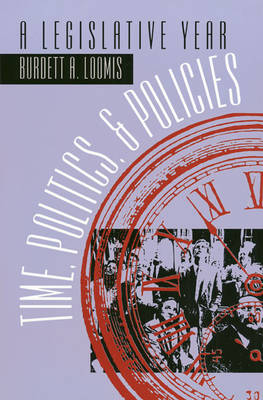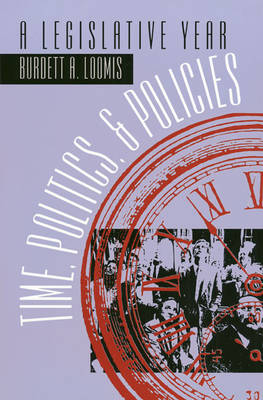
En raison d'une grêve chez bpost, votre commande pourrait être retardée. Vous avez besoin d’un livre rapidement ? Nos magasins vous accueillent à bras ouverts !
- Retrait gratuit dans votre magasin Club
- 7.000.000 titres dans notre catalogue
- Payer en toute sécurité
- Toujours un magasin près de chez vous
En raison de la grêve chez bpost, votre commande pourrait être retardée. Vous avez besoin d’un livre rapidement ? Nos magasins vous accueillent à bras ouverts !
- Retrait gratuit dans votre magasin Club
- 7.000.0000 titres dans notre catalogue
- Payer en toute sécurité
- Toujours un magasin près de chez vous
Description
Year after year, in state after state, the end-of-session crunch sets in as legislatures wade through dozens of bills within a few days or, on occasion, a few hours. This legislative logjam, says Burdett Loomis, is one very public manifestation of a hidden but crucial element within the policy making process--timing. We tend to think of institutions in terms of structure, most commonly as committees, staffs, and information systems, says Loomis. Less obvious, but no less significant, he contends, are the ways in which time is structured-electoral deadlines, budget cycles, and legislative closing dates. To investigate the effects of time on legislation, Loomis observed the politics of policymaking in Kansas from May 1988 through May 1989-a year with gubernatorial campaigns and a rare surplus in the state coffers. Using specific examples, he shows how deadlines occur in regular, predictable patterns in the development of issues and in subsequent policy decisions and explains how they ultimately narrow the choices presented to any legislative body. In addition, he notes, how policymaking must balance their political interests with their policy preferences. The legislative and executive strategies in Kansas are not isolated phenomena. Loomis's conclusions on how long-term trends, specific cycles, and deadlines combine to affect policy outcomes provide insight both for lawmaking in other states and policy making at the national level.
Spécifications
Parties prenantes
- Auteur(s) :
- Editeur:
Contenu
- Nombre de pages :
- 200
- Langue:
- Anglais
- Collection :
Caractéristiques
- EAN:
- 9780700606221
- Date de parution :
- 07-01-93
- Format:
- Livre broché
- Format numérique:
- Trade paperback (VS)
- Dimensions :
- 152 mm x 229 mm

Les avis
Nous publions uniquement les avis qui respectent les conditions requises. Consultez nos conditions pour les avis.






